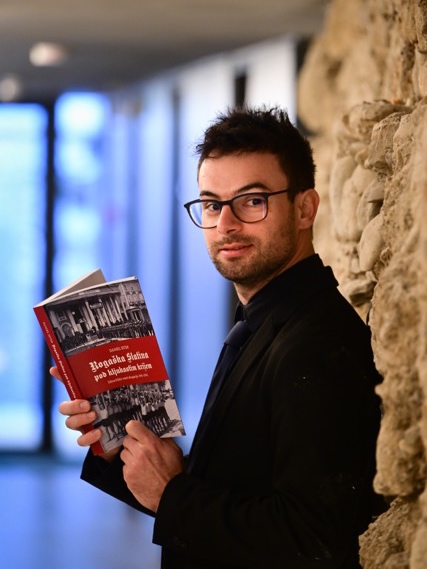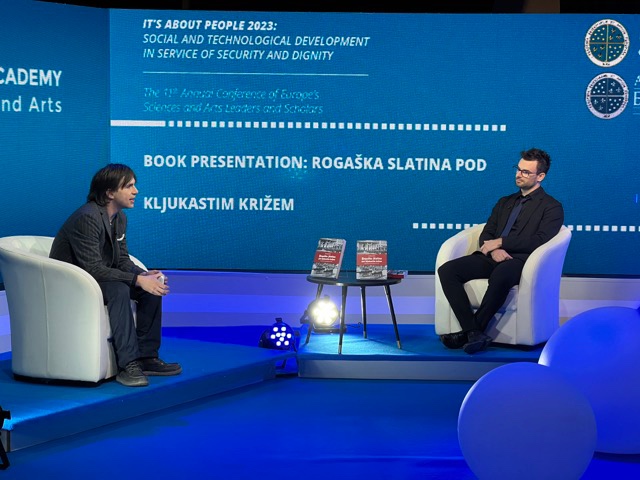
The Second Edition of Siter's Rogaška Slatina Under the Swastika

Due to huge interest, inquiry, received media publicity, and positive reviews and reactions from the wider readership, the second (supplemented and expanded) edition of the scholarly book by author Daniel Siter, assistant, young researcher and PhD candidate at Alma Mater Europaea – ISH has been published.
The book reveals the darkest chapter in the centuries-long history of the town. It represents the first in-depth, systematic, comprehensive, and rounded historiographical microstudy of a hitherto unresearched area of the four-year Nazi occupation of the famous Slovenian (health) spa resort Rogaška Slatina. »The German occupier banned and destroyed the Slovenian press. We are talking about the destruction of Slovenian libraries, the burning of Slovene books, the implementation of German lessons in schools, the building of German kindergartens, schools, and libraries, the use of the German language in all public places, the Germanization of personal and place names,« explains Siter and adds that four-years long research is drawing on extensive archival sources, school chronicles, central registers, microfilms, occupiers newspapers and other print, valuable private collections, sensitive personal papers belonging to victims of Nazi violence and their surviving descendants, pictorial material (more than 180 pictures), oral testimonies of surviving witnesses, and field research (LIDAR technology).
»Compared to other Nazi-occupied cities, Rogaška Slatina had a specific story with significant differences,« Siter analyses and goes further: »Due to its prominence as a spa resort and producer of premium crystal glass, its large and undamaged hotel and other accommodation capacities, the camp for German children from bombed or endangered urban areas of the German Reich, the military training camp of the Hitler Youth for the pre-military training and Nazi world-view indoctrination of children and youth, the headquarters of denationalising organisations and associations, the administrative apparatus, the special SA-Gruppe Südmark command school for military-political training and ideological education of the Wehrmannschaft command cadre, levers of the paramilitary and military, police, Gestapo, customs, and administrative authorities, the command headquarters, the construction and fortification headquarters (connected with the construction of the anti-invasion fortification systems and defence barriers along the Sotla demarcation line, the penal labour camp and its position along the German-Croatian state border on the river Sotla, the occupier transformed Rogaška Slatina into one of the key Lower Styrian outposts and an important border city of the Third Reich with a strong protective role.«
Siter's study shows the horrifying stories of local people – subjected to deportation, terror, racial examinations, mobilisation and other irreparable horrors, still remembered and felt today by a handful of surviving victims.

